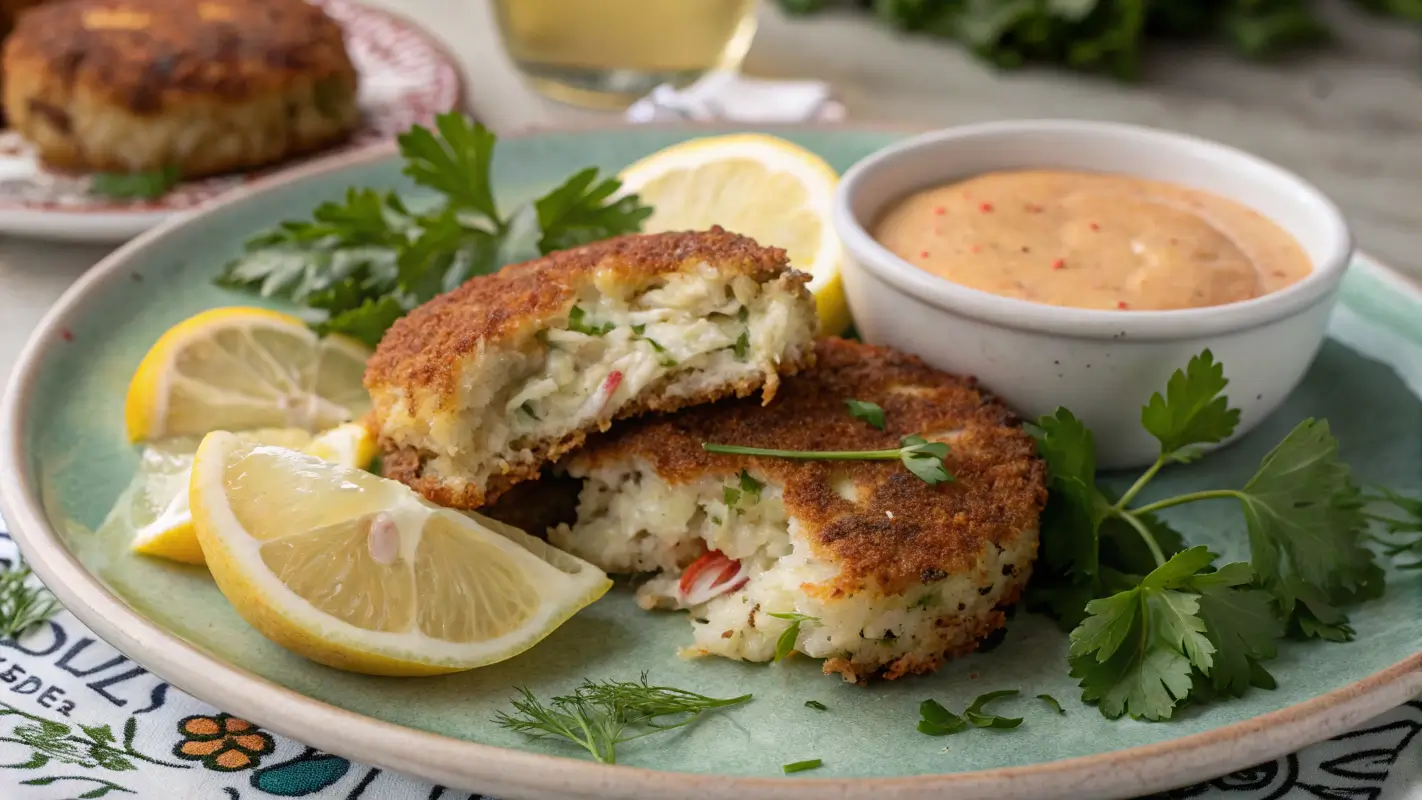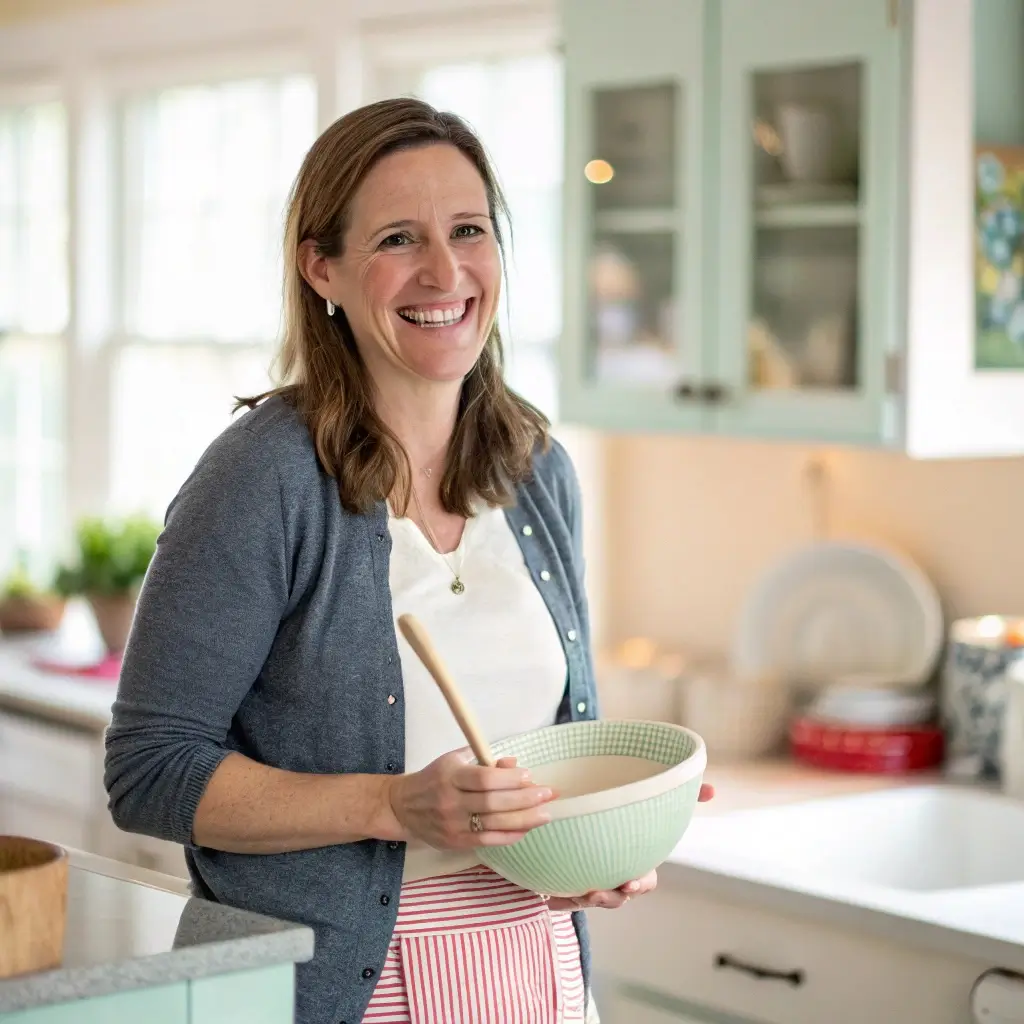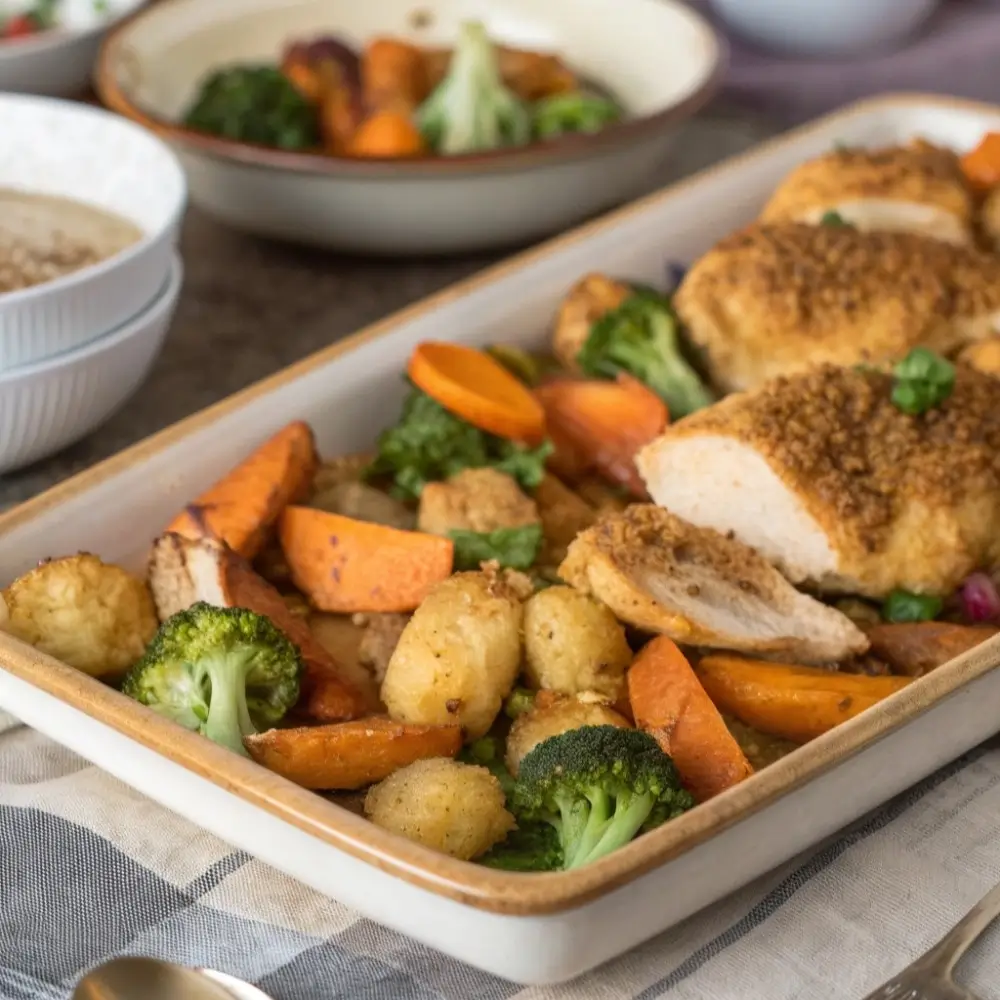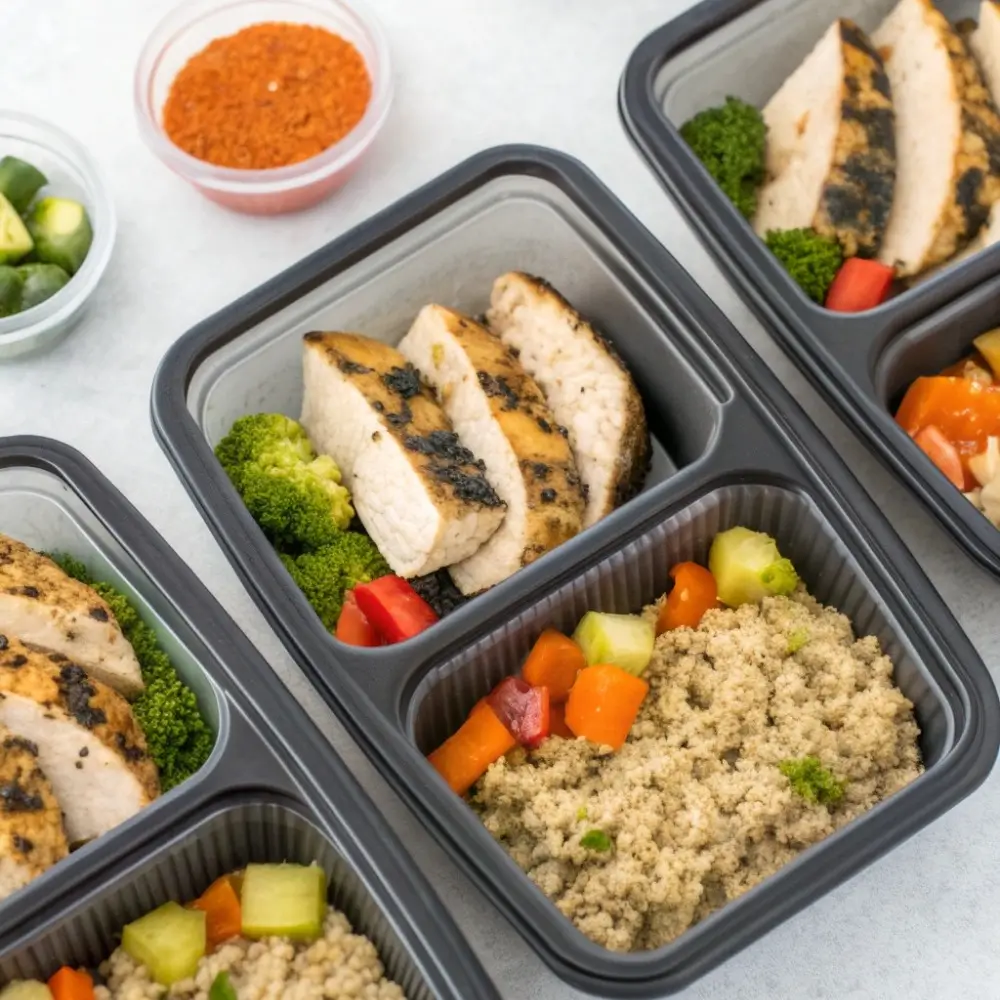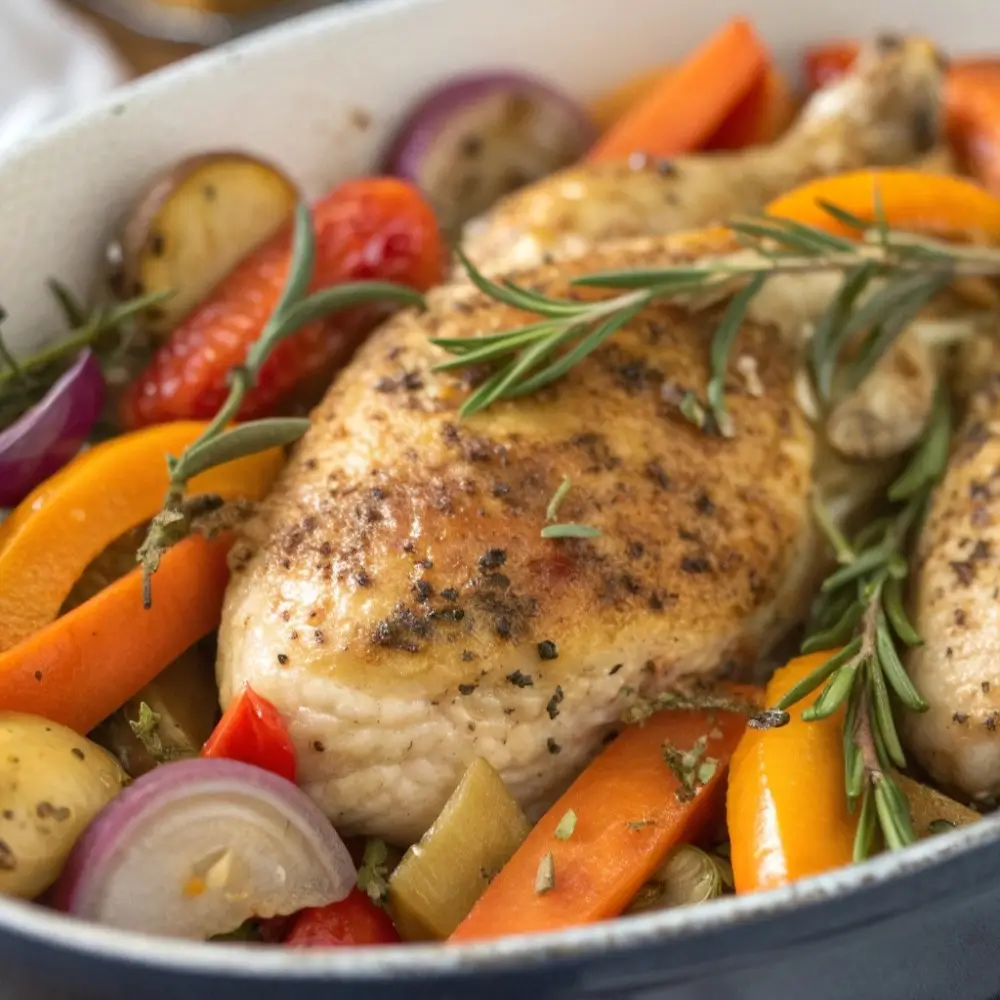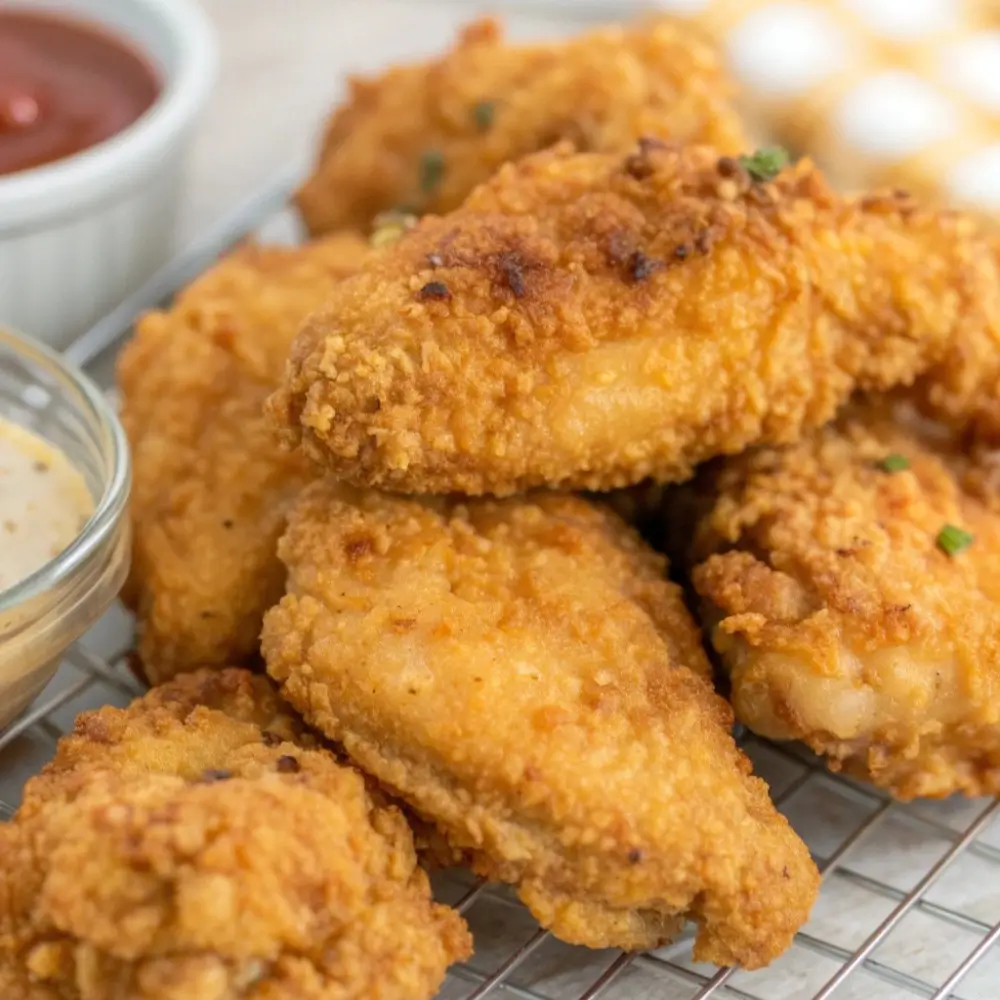Table of Contents
Introduction to Old Bay Crab Cakes
If you’re craving a dish that’s both classic and full of flavor, look no further than the timeless Old Bay Crab Cake Recipe. Hailing from the Chesapeake Bay area, these Maryland-style crab cakes have earned their place as a beloved seafood dish across the world. Whether you’re preparing them for a special occasion or a casual dinner, crab cakes are always a crowd-pleaser.
But what makes Old Bay crab cakes so special? Well, the answer lies in the key ingredient: Old Bay seasoning. Known for its signature blend of spices, Old Bay adds a unique kick that elevates the flavor of the tender crab meat, making every bite a taste of the coast. So, let’s dive in and explore everything you need to know about making these delectable crab cakes!
The Legacy of Old Bay Seasoning
Old Bay seasoning isn’t just a spice blend—it’s a piece of culinary history. Originating in the 1940s, this iconic mix of celery salt, paprika, mustard, and other spices quickly became synonymous with Chesapeake Bay cuisine. Over the years, it’s been a key player in everything from seafood boils to shrimp cocktails, but its role in crab cakes is what has really made it famous.
Origins and History
Old Bay seasoning was created by a German immigrant named Gustav Brunn, who originally introduced it to the seafood-loving residents of Baltimore. The blend’s distinct and well-balanced flavor profile quickly made it a favorite, particularly for seasoning crab cakes, one of Maryland’s most cherished dishes. It’s become a staple in kitchens across the United States and beyond.
Cultural Significance in Maryland
In Maryland, Old Bay seasoning is more than just a spice—it’s a cultural icon. The state is known for its blue crabs, and no crab cake is complete without a generous sprinkle of Old Bay. In fact, it’s almost impossible to find a Maryland crab cake that doesn’t feature this famous seasoning, and it’s beloved by locals and tourists alike.
What Makes Old Bay Crab Cakes Special
Old Bay crab cakes are the perfect blend of crispy, golden-brown exterior and soft, succulent crab meat inside. The seasoning creates a mouthwatering experience with every bite, while the addition of fresh ingredients brings out the natural sweetness of the crab. These crab cakes are more than just a recipe—they’re a representation of Maryland’s rich culinary heritage.
Flavor Profile and Ingredients
The key to the perfect Old Bay crab cake lies in the balance of flavors. The crab meat is the star of the dish, and the Old Bay seasoning brings a zesty warmth that complements the sweetness of the seafood. Add in breadcrumbs, eggs, and a bit of mayonnaise to bind everything together, and you’ve got a recipe that will make your taste buds dance.
Popularity and Variations
Though traditional Maryland crab cakes are a favorite, this recipe has many variations. Some prefer to add mustard or hot sauce for an extra layer of flavor, while others may incorporate a dash of lemon zest for a citrusy twist. Regardless of the variations, the foundation of Old Bay crab cakes remains the same—crab meat, seasoning, and love.
Essential Ingredients and Equipment
When it comes to crafting the perfect Old Bay crab cakes, choosing the right ingredients is crucial. The star of the show is always the crab meat, but there are other ingredients that come together to create the mouthwatering texture and flavor we all love. Let’s go over the essentials and the equipment you’ll need to get started.
Ingredients for Old Bay Crab Cakes
1. Crab Meat
The most important ingredient in your crab cakes is, of course, the crab meat. For the best results, look for fresh lump crab meat. It’s the perfect combination of tenderness and flavor, but you can also use claw meat for a slightly stronger taste. If fresh crab isn’t available, canned crab meat works as an alternative.
2. Old Bay Seasoning
Old Bay seasoning is what gives these crab cakes their distinct flavor. A blend of celery salt, paprika, mustard, and other spices, this seasoning mix is a must-have for an authentic taste. If you can’t find it locally, it’s widely available online, and it’s worth tracking down to ensure you get the full experience.
3. Breadcrumbs
Breadcrumbs help bind the ingredients together while giving the crab cakes that delightful crispness on the outside. Panko breadcrumbs are a great choice because they provide a light, airy crunch, but regular breadcrumbs can also be used.
4. Eggs
Eggs are another binding agent that help hold the crab cakes together without overpowering the delicate flavor of the crab. One or two eggs should be sufficient for a batch of crab cakes, depending on the amount of crab meat you’re using.
5. Mayonnaise
Mayonnaise adds a creamy texture and helps to bind everything together. It also enhances the overall richness of the crab cakes without making them greasy. A spoonful or two of mayonnaise is all you need for a perfectly smooth mix.
6. Mustard
Adding a bit of mustard to the mixture adds a tangy element that complements the richness of the crab meat. You can use Dijon mustard or yellow mustard, depending on your preference.
7. Lemon Juice
A squeeze of fresh lemon juice brightens up the flavors of the crab cakes, cutting through the richness and adding a refreshing note.
8. Seasonings (Salt, Pepper, and Parsley)
A pinch of salt and pepper enhances the natural flavor of the crab meat. Fresh parsley also adds a burst of color and a bit of herbal freshness to the mixture.
Optional Add-ins:
- Hot Sauce: For those who like a little heat, a dash of hot sauce can be added to give the crab cakes a spicy kick.
- Garlic: Freshly minced garlic can lend an aromatic depth to the crab cakes.
Equipment You’ll Need
1. Mixing Bowls
A large mixing bowl is necessary to combine the crab meat and all the ingredients evenly.
2. Shallow Dish or Plate for Forming Crab Cakes
After combining your ingredients, you’ll need a surface to shape your crab cakes. A shallow dish or plate makes this process easy.
3. Nonstick Skillet or Cast Iron Skillet
A nonstick skillet or cast iron skillet is ideal for cooking crab cakes. The nonstick surface ensures that the cakes don’t stick, while the cast iron skillet provides even heat distribution for that golden, crispy exterior.
4. Spatula
A spatula helps in flipping and transferring the crab cakes gently, preventing them from falling apart.
5. Plate and Paper Towels
Once your crab cakes are cooked, place them on a plate lined with paper towels to absorb any excess oil.
With all the ingredients and equipment ready, you are now set to move on to the next step—preparing and cooking the crab cakes. Let’s dive into the step-by-step preparation guide to help you achieve crab cakes that will impress everyone at your table!
Step-by-Step Preparation Guide
Now that you have all the ingredients and equipment ready, it’s time to dive into the fun part—making the Old Bay crab cakes! These crab cakes are sure to be a hit at any meal, and with a little care and attention, you’ll create the perfect balance of flavor and texture. Here’s how to prepare them from start to finish.
Step 1: Prepare the Crab Meat
The first thing you’ll want to do is prepare the crab meat. If you’re using fresh crab, gently pick through the meat to remove any remaining shells or cartilage. If you’re using canned crab, drain the excess liquid and carefully break the lumps into smaller pieces. You don’t want the crab meat to be mushy, so handle it with care, keeping the lumps intact for texture.
Step 2: Make the Crab Cake Mixture
In a large mixing bowl, combine the crab meat with your Old Bay seasoning. The amount of seasoning you use depends on your personal preference, but about one to two tablespoons should be sufficient. Next, add the breadcrumbs, mayonnaise, mustard, and egg. You can also add any optional ingredients like hot sauce, parsley, or garlic at this point. Mix everything together gently, being careful not to overwork the crab. You want the ingredients to bind together, but you still want to maintain the delicate crab texture.
Step 3: Form the Crab Cakes
Once your mixture is well-combined, it’s time to shape the crab cakes. Using your hands or a spoon, scoop out about 1/4 cup of the mixture and gently form it into a patty. The size can vary depending on your preference, but medium-sized cakes tend to cook more evenly. Place each formed crab cake on a shallow plate or tray as you work. If you like a crispier outer layer, you can lightly press down on the patties to flatten them a bit.
Step 4: Chill the Crab Cakes
Before you start cooking, it’s a good idea to refrigerate the crab cakes for about 20-30 minutes. Chilling the cakes helps them hold their shape during cooking and results in a better texture. If you’re short on time, this step can be skipped, but it’s highly recommended for best results.
Step 5: Cooking the Crab Cakes
Now that your crab cakes are chilled and ready to go, heat a nonstick skillet or cast iron pan over medium heat. Add a couple of tablespoons of butter or oil to the pan to prevent the cakes from sticking and to ensure they crisp up nicely. Once the pan is hot, carefully place the crab cakes in the skillet. Don’t overcrowd the pan—cook them in batches if necessary. Fry the crab cakes for about 3-4 minutes per side or until they turn golden brown and crispy. Be gentle when flipping them to avoid breaking apart the delicate patties.
Step 6: Drain and Serve
Once the crab cakes are golden and crispy on both sides, use a spatula to transfer them to a plate lined with paper towels to absorb any excess oil. Serve immediately while they’re still hot and crispy!
Variations and Customizations
While the classic Old Bay crab cakes recipe is a flavorful hit on its own, there are plenty of ways to customize the dish to suit your personal taste or dietary preferences. Whether you’re looking for a spicy kick, a healthier twist, or a more indulgent version, these variations will elevate your crab cake game.
1. Spicy Old Bay Crab Cakes
If you love a little heat, why not take your crab cakes to the next level? The Old Bay seasoning already packs a punch, but you can turn up the spice by adding:
- Cayenne Pepper: Just a pinch of cayenne pepper can infuse your crab cakes with a zesty kick.
- Chopped Jalapeños: For an extra burst of freshness and spice, finely chop some jalapeños and fold them into the mixture.
- Hot Sauce: A dash of your favorite hot sauce can also add heat and flavor, but be sure to balance it with the seasoning so it doesn’t overwhelm the delicate crab meat.
These tweaks are sure to make your crab cakes irresistible for spice lovers!
2. Healthier Crab Cakes: Low-Fat and Gluten-Free Options
For those watching their calorie intake or needing a gluten-free option, here are a few simple swaps to make your crab cakes healthier without compromising on flavor:
- Greek Yogurt for Mayo: Swap out the mayonnaise for a tangy, protein-rich Greek yogurt. It will still help bind the crab cakes together while reducing the fat content.
- Gluten-Free Breadcrumbs: If you or your guests need a gluten-free option, simply substitute regular breadcrumbs with gluten-free breadcrumbs. You can also use crushed rice cakes or almond flour as alternatives.
- Baking Instead of Frying: For a healthier cooking method, bake your crab cakes on a greased baking sheet at 375°F (190°C) for 15-20 minutes. This will reduce the amount of oil used and provide a crisp, golden exterior without the extra calories from frying.
3. Vegetarian Crab Cake Alternatives
While traditional crab cakes are made with crab meat, it’s possible to make a delicious vegetarian or vegan version that’s just as satisfying. Here’s how to make it work:
- Jackfruit as a Substitute for Crab: Jackfruit has a shredded texture that can mimic the flakiness of crab meat. Combine it with Old Bay seasoning, breadcrumbs, and other traditional ingredients to make a plant-based crab cake.
- Tofu Crab Cakes: Tofu is another versatile ingredient that can be used in place of crab meat. Press out excess water from firm tofu, crumble it, and mix it with Old Bay seasoning, vegetables, and breadcrumbs for a vegan-friendly option.
These plant-based options provide all the flavors and textures of a traditional crab cake while accommodating different dietary needs.
4. Adding Fresh Herbs and Vegetables
If you like your crab cakes with a burst of freshness, consider adding some chopped herbs and vegetables to the mix. These additions can add texture, flavor, and vibrant color to your crab cakes. Some popular choices include:
- Fresh Parsley: This herb adds freshness and bright green color to the crab cakes.
- Chives: The mild, onion-like flavor of chives pairs perfectly with crab meat.
- Red Bell Peppers: Finely diced red peppers add sweetness, color, and crunch to each bite.
These simple vegetable and herb additions can make your crab cakes even more flavorful and appealing.
5. Indulgent Versions: Cheesy Crab Cakes
For those who love indulgent meals, try adding some cheese to your crab cakes. Cheese adds richness and a creamy texture, elevating the dish to a new level of comfort food. Here’s how to incorporate it:
- Cheddar Cheese: Grated cheddar can add a sharp, melty texture that complements the sweetness of the crab meat.
- Cream Cheese: For extra creaminess, mix a small amount of cream cheese into the crab cake mixture. This will make your crab cakes more moist and decadent.
While these options add extra calories, they’re perfect for those looking to indulge in a more decadent version of the classic crab cake.
6. Mini Crab Cakes for Appetizers
If you’re serving crab cakes as an appetizer or party snack, consider making mini crab cakes. Simply form smaller patties, and they’ll be perfect for popping in your mouth at gatherings. You can customize the flavor to suit any of the variations mentioned above. These bite-sized treats are sure to be a hit at your next event!
Nutritional Information and Health Considerations
When it comes to enjoying Old Bay crab cakes, they not only provide a delightful taste but also come with some nutritional benefits—though, like any indulgent dish, they should be enjoyed in moderation.
Nutritional Breakdown of Old Bay Crab Cakes
The ingredients in crab cakes provide a good source of protein, healthy fats, and essential nutrients. Let’s break it down:
-
Crab Meat: Crab is an excellent source of lean protein, making it a great option for muscle repair and overall growth. It’s also rich in vitamin B12, which is important for red blood cell formation and maintaining the nervous system. Crab meat is low in fat, especially when compared to other animal proteins, and contains heart-healthy omega-3 fatty acids.
-
Old Bay Seasoning: This iconic seasoning adds flavor without many calories or fat, but it’s rich in spices like paprika, mustard, and celery salt, which may provide anti-inflammatory properties and aid in digestion.
-
Breadcrumbs: These provide a nice texture to the crab cakes but are typically higher in carbohydrates. Opt for whole wheat breadcrumbs if you’re looking to increase fiber content.
-
Egg and Mayonnaise: The egg adds a bit of extra protein, and the mayonnaise (if used in moderation) helps bind the mixture while adding some fat. You can make a lighter version by using Greek yogurt instead of mayo.
Health Considerations
While Old Bay crab cakes are a flavorful treat, they do come with some considerations:
-
Sodium Content: Depending on how much Old Bay seasoning you use, the sodium content can be relatively high. If you are watching your sodium intake, you can control this by using less seasoning or opting for a low-sodium version of Old Bay.
-
Fat Content: Traditional crab cakes can contain some fat from the mayo and frying process. To make them healthier, consider baking the crab cakes instead of frying them, or use a healthier oil like olive oil.
-
Allergens: If you’re cooking for others, always note that crab cakes contain seafood, which is a common allergen. Also, breadcrumbs and mayonnaise can pose a risk for individuals with gluten or dairy allergies. Be sure to offer alternatives like gluten-free breadcrumbs or dairy-free mayo if needed.
Despite these considerations, Old Bay crab cakes can be a nutritious and satisfying dish when enjoyed as part of a balanced diet. Just remember, moderation is key!
For tips on perfecting your crab cakes and enhancing the flavor with the right spices, visit Bon Appetit’s guide to seasoning seafood.
FAQs about Old Bay Crab Cakes
When it comes to making the perfect Old Bay crab cakes, you might have a few burning questions. Don’t worry—we’ve got you covered with answers to the most frequently asked questions!
1. Can I use frozen crab meat for these crab cakes?
Yes, you can absolutely use frozen crab meat. Just be sure to thaw it properly and drain any excess moisture before using it in the recipe. Fresh crab meat will provide the best flavor and texture, but frozen is a convenient alternative.
2. Can I bake these crab cakes instead of frying them?
Absolutely! Baking crab cakes is a great healthier option. Preheat your oven to 375°F (190°C) and bake the crab cakes for 15-20 minutes, flipping halfway through, until golden brown. You won’t get the same crispy texture as frying, but they’ll still taste delicious!
3. How can I make the crab cakes spicier?
If you prefer your crab cakes with an extra kick, feel free to increase the amount of Old Bay seasoning, or add a touch of cayenne pepper or hot sauce to the mixture. A little bit of diced jalapeño can also bring some heat.
4. How do I store leftover crab cakes?
Store leftover crab cakes in an airtight container in the refrigerator for up to 2-3 days. If you want to keep them fresh longer, you can freeze them. Just make sure to place parchment paper between each crab cake to prevent them from sticking together.
5. Can I make these crab cakes ahead of time?
Yes! You can prepare the crab cakes up to a day in advance. Simply form the patties and refrigerate them. This will help them hold their shape during cooking. When you’re ready, cook them as directed for a quick and easy meal.
